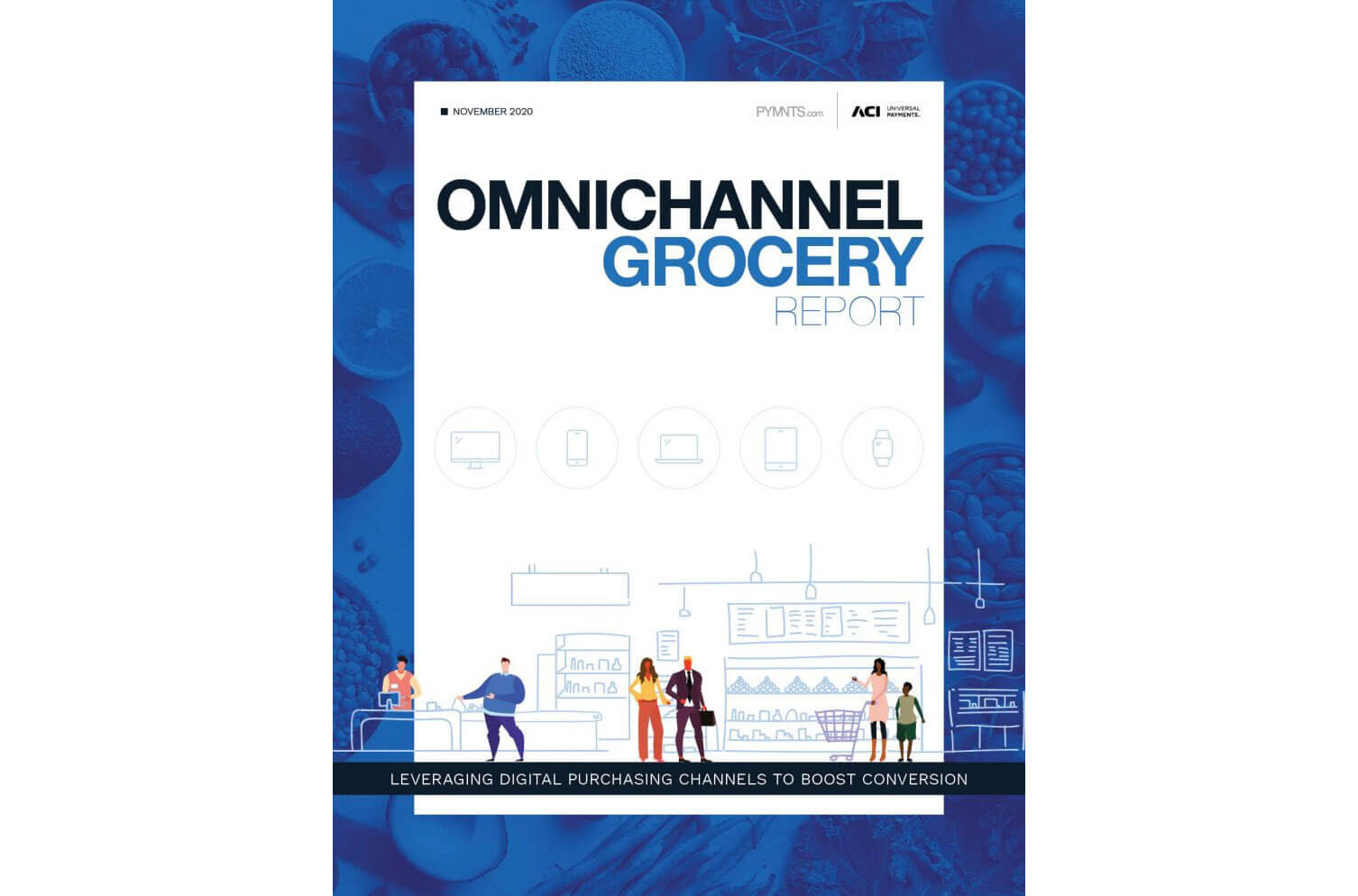New data from ACI Worldwide and PYMNTS.com shows 35 percent of consumers would be willing to leave their preferred grocers for others that allow them to pay in-store in a contactless manner. The survey of more than 2,000 adult U.S. consumers, which addressed grocery shopping habits since the pandemic, also showed that contactless credit cards (43 percent) and contactless debit cards (39 percent) are the two most preferred touchless payment options, followed by digital wallets (30 percent), cards on file (25 percent) and QR codes (18 percent).
The survey also showed that 42 percent of Millennials and 41 percent of Gen X consumers are willing to switch to grocery stores that offer touchless payment options. In addition, 17 percent of consumers who do not use contactless credit cards would like to, and 15 percent of consumers who do not use contactless debit cards would like to, too.
“In the wake of the pandemic, a new type of consumer is emerging – one who shops less in-store and represents a quickly growing part of the digital-first economy,” said Debbie Guerra, EVP, ACI Worldwide. “For grocery stores, this is a huge opportunity to cater to these consumers by providing digital and contactless payment options.”
Nearly four times more grocery shoppers (16 percent) have shifted to buying more groceries online than in-store compared to the start of the pandemic (4 percent). Overall, the survey shows that 64 percent of the U.S. population are omni-channel shoppers who make use of digital channels to buy at least some of their groceries online.
The most popular delivery channels consumers have used when shopping online for groceries during the pandemic are home delivery (23 percent), curbside pickup (21 percent) and in-store pickup (12 percent).
“While consumers are still purchasing their groceries in-store, particularly when buying perishable items such as fresh meats, fruits and vegetables, the survey shows an increase in online grocery shopping since the pandemic began,” Guerra said. “Consumers’ need for these necessities, coupled with the need to stay safe during the pandemic, is driving online grocery shopping, whether for home delivery or curbside pickup. We expect this trend to increase as COVID-19 cases continue to climb in the U.S.”
Below are some key findings from the survey:
In-store vs. online grocery shopping
- Seventy-nine percent of all grocery shoppers still prefer to buy at least some of their groceries in-store;
- Sixty-four percent buy at least one of their routine grocery purchases online;
- Sixteen percent of all grocery shoppers are buying fewer groceries in-store and more online than prior to the pandemic, compared to 4 percent who had shifted from in-store to online back in March;
- Eighty percent of all consumers who buy groceries report purchasing them in-store;
- Seventeen percent of all consumers have switched from grocery shopping in-store to online since the start of the pandemic;
- Consumers are buying non-food items such as shampoo, first-aid items and cleaning products (21 percent), as well as packaged food products (14 percent) online; and
- Consumers are purchasing items in-store when buying fruits and vegetables (83 percent), fresh meats (81 percent) and dairy products (77 percent).
Digital and contactless payments
- Forty-three percent of consumers who have never purchased groceries online would be “very” or “extremely” interested in using digital payment options, and 38 percent would be “somewhat” interested;
- Forty-one percent of consumers who have already used contactless payments in-store are even more willing to make the switch;
- Thirty-seven percent of high-income and 37 percent of low-income consumers are more likely to want to shop in stores that provide contactless payments options; and
- Usage of digital wallets remains relatively low compared to the growing interest in them. There is a gap between the usage and demand for digital wallets (8 percent) and cards on file (8.8 percent).
Delivery channels
- Consumers say they are ordering groceries online with the following delivery channels more now than they did before the pandemic:
- Home delivery – 23 percent;
- Curbside pickup – 21 percent; and
- In-store pickup – 12 percent.
- Grocery shoppers who shop online are acquiring their digital purchases through:
- Home-delivery – 42 percent;
- Curbside pickup – 40 percent; and
- In-store pickup – 35 percent.
The Omnichannel Grocery Report, a PYMNTS and ACI Worldwide collaboration, is based on a census-balanced panel of 2,066 U.S. consumers. The report assesses how consumers’ use of digital shopping channels has changed since the COVID-19 pandemic began and gauges interest in using contactless and digital payment methods to pay for their purchases.

